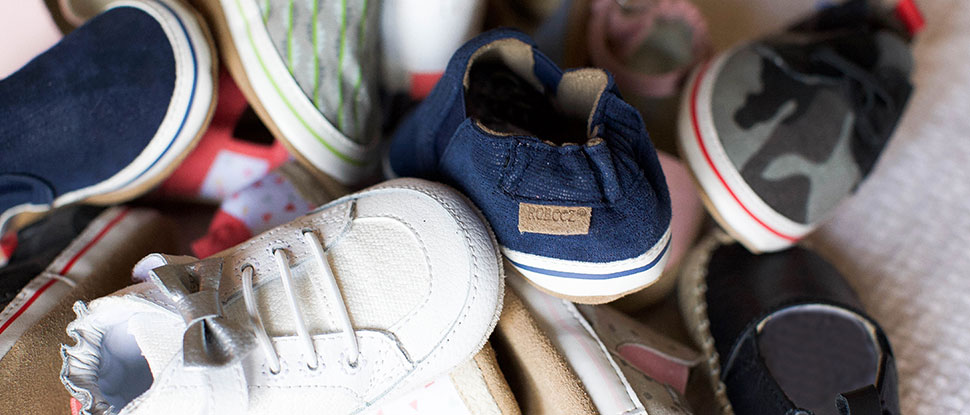Are Secondhand Baby Shoes Safe?
20th Jun 2018

The hazards of secondhand shoes include structural damage to the feet, the spreading of germs and disease, and increased falls due to worn out safety features. These dangers are present even when shoes are passed between siblings, since each child molds their shoes according to their own unique posture, gait and stride.
Hand-Me-Down & Used Kids Shoes: A Danger to Growing Feet
Tucking your toddler’s used shoes away for her baby sibling seems like an obvious choice for most parents. After all, hand-me-downs are an economical, eco-conscious and socially responsible way to clothe your fast-growing bundle of joy, right? In the case of apparel and accessories , reusing older items in good condition poses an ideal solution for parents looking to save time and money. With shoes, it’s an entirely different story. Used shoes actually pose a number of risks to your child’s podiatric health and development, and we want to share this important knowledge so you can make informed choices about your child’s wellness.
Secondhand Shoes Impede Normal Foot Development
At Robeez we often emphasize how crucial it is to pay particular attention to the natural development of your baby’s feet. Highly moldable at birth, the bones in your child’s feet will not fully harden until 18-20 years of age. Given their natural tendency to form to external structures, little feet should never be placed in shoes that artificially change their shape.
We all know the ecstatic spirit and avid curiosity of a child at play. They run and bounce, wiggle and roll, fall and pick themselves up again as they explore the wonders of a brand-new world. It’s a delight to watch them discover life’s simple joys, but all of this boundless energy inevitably takes a toll on their footwear. Kids stretch, mold and bend shoes based on their individual styles of movement, leaving a lasting imprint of their unique anatomy on all parts of a shoe. Passing these pre-shaped shoes on to another child forces their feet to conform to a shape that is not their own, thereby hindering proper, natural development.
Secondhand Shoes Carry Germs & Contagions
The warm, moist environment in active children’s shoes creates the perfect environment for fungi and bacteria to flourish. Contagious ailments like Athlete’s Foot, Plantar Warts and Hand, Foot and Mouth Disease often take up secret residence in shoes and pass from child to child with ease. You may be thinking sure, I don’t want to expose my baby to health risks, but I know for a fact that their older sibling never had any of these issues. Fair enough—but remember that it’s important to teach young children healthy habits including avoiding shoe sharing with school friends and playmates. Help prevent the spread of disease by instilling in them a strong sense of self-care and health-wise boundaries.
Secondhand Shoes Have Worn-Out Safety Features
Just as children leave their own footprint on their shoes, their jubilant activity often places stresses on shoes’ safety features. Elastic closures can become stretched, causing shoes to slip off or slide around on the foot, leading to tripping, falls and difficulty walking. Similarly, non-skid soles can become worn over time, and while an older sibling may have done fine with this gradual change, this lack of traction may pose a risk to younger siblings.
While we generally advise against passing down used shoes to younger siblings, there are a few notable exceptions to this rule. Shoes only worn a few times are safe for a second owner, though remember to sanitize thoroughly as a precaution. When shopping for baby and toddler shoes opt for one or two high-quality pairs of soft-soled footwear over fashion styles and remember to regularly check your child’s feet for signs that it’s time to size up. With just a little mindfulness you can ensure the health of your baby’s feet in these first crucial years.

